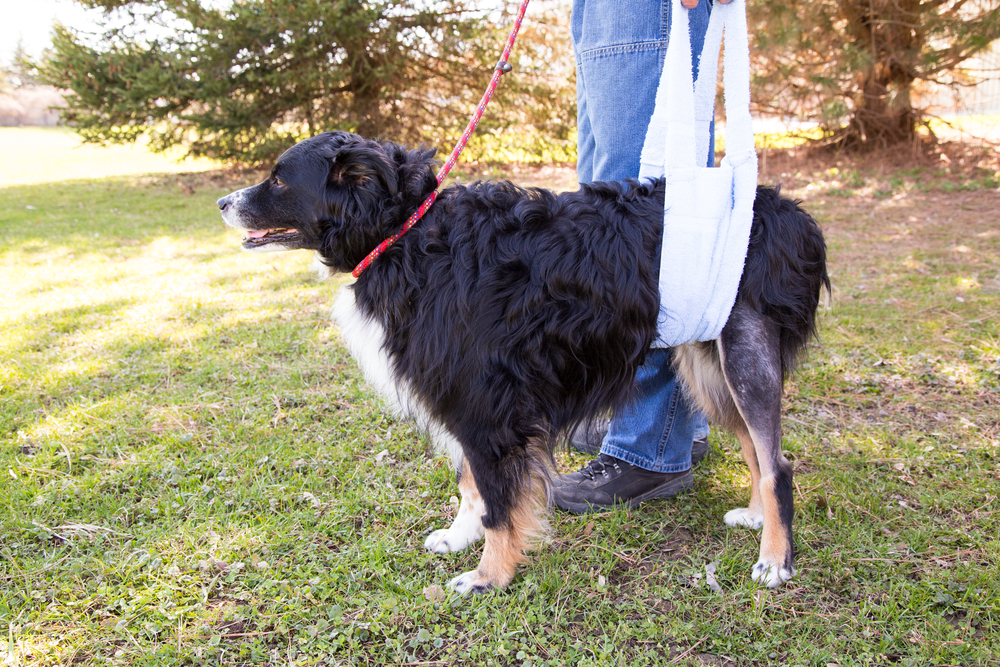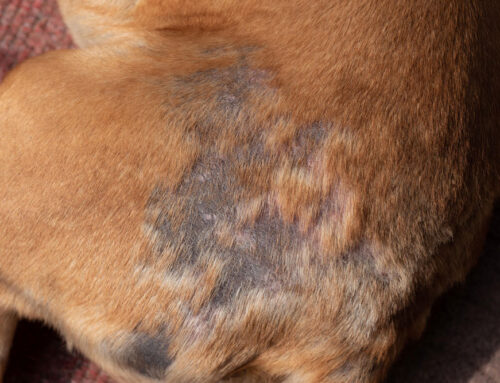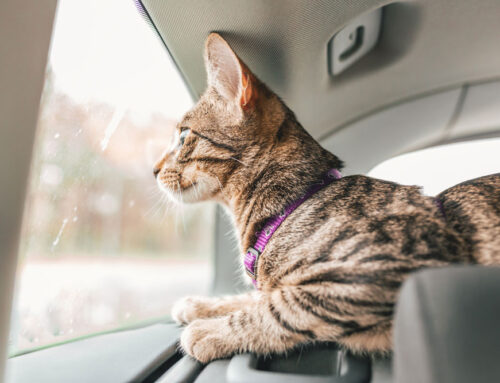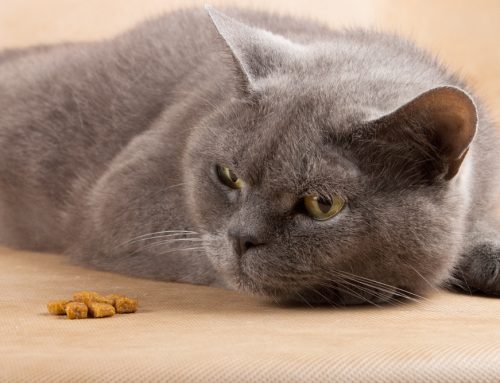Cranial cruciate ligament disease (CCLD) often goes undiagnosed. However, this condition is the most common cause of dogs’ hind limb lameness. To determine whether you should have your dog evaluated for CCLD, read our Twin Maples Veterinary Hospital team’s guide to this condition.
Canine knee anatomy
To understand CCLD, you need to learn about canine knee anatomy. The knee is a complicated joint, consisting of the femoral bone above, the tibial bone below, the kneecap (i.e., patella), and the small fabella at the back. Cartilage-like material (i.e., menisci) cushions these structures. Multiple ligaments hold together the knee, and allow the joint to flex and extend properly. The cranial and caudal cruciate ligaments extend from the femur on one side to the tibia on the other, forming an X inside the knee, which helps prevent the tibia from moving forward in relation to the femur.
Cranial cruciate ligament injury in dogs
In small-breed dogs, cranial cruciate ligament (CCL) injury is typically associated with patella luxation or a traumatic incident. In large-breed dogs, the following two distinct disease processes can develop:
- Young dogs — Young, athletic dogs who play hard or misstep can injure a knee, tearing or rupturing a CCL.
- Older dogs — In the majority of older dogs’ CCLD development, the CCL degrades over time, causing the ligament to stretch or tear gradually.
Overweight dogs and some breeds, including rottweilers, Newfoundlands, Staffordshire terriers, Mastiffs, Akitas, Saint Bernards, and Chesapeake Bay or Labrador retrievers, have a high CCLD risk. In addition, 40% to 60% of dogs who have CCLD in one knee develop the condition in the other knee.
Cranial cruciate ligament injury signs in dogs
When acute trauma causes a CCL injury, a dog typically favors the affected hind limb. When degenerative processes damage the joint, signs can be more subtle and may include:
- Difficulty rising from a resting position
- Difficulty sitting down
- Decreased activity or disinterest in play
- Trouble navigating stairs
- Difficulty or unwillingness to jump on or off surfaces
- Decreased knee range of motion
- Stiffness, especially after resting
- Swelling on the inside of the lower hind limb
- Popping or clicking noises when the dog moves
- Muscle atrophy over the affected hindlimb
Cranial cruciate ligament diagnosis in dogs
Several diagnostic tests are used to diagnose CCLD. When evaluating a dog with a hind limb lameness, our Twin Maples Veterinary Hospital team may perform the following diagnostic tests:
- Observation — Our team watches your dog as they walk, sit, and rise from a resting position.
- Palpation — Our team palpates your dog’s knee and hind limb, trying to detect swelling. If the CCL is completely ruptured, we can appreciate a drawer sign by manipulating the knee to determine if the tibia moves forward in relation to the femur. We may also hear popping or clicking noises when manipulating the joint.
- X-rays — X-rays help our team appreciate joint effusion as well as determine whether arthritis is present. X-rays also help us rule out other conditions.
- Arthroscopy — In some cases, visualizing the inside of the joint during surgery is necessary to diagnose CCLD definitively.
Cranial cruciate ligament treatment in dogs
Surgery is typically the best way to address CCLD, because such a procedure is the only way to stabilize the joint effectively. Surgery’s goal is not to repair or replace the CCL, because the structure doesn’t have the ability to heal. The goal is to remove damaged tissue and stabilize the joint to help reduce arthritis development.
The most effective surgical procedure to treat CCLD is the tibial plateau leveling osteotomy (TPLO). Before surgery, our Twin Maples Veterinary Hospital team X-rays your dog’s knee to measure the tibia top’s angle (i.e., tibial plateau angle). Our team eliminates joint instability by reducing this angle, typically to about 4 to 10 degrees.
During TPLO, our team first evaluates your dog’s joint, especially the meniscal cartilages, which are often damaged as a result of a CCL injury. To help alleviate your dog’s joint pain, we remove damaged tissue. The actual TPLO procedure involves making a curved cut at the tibia’s top and rotating the bone to create the desired tibial plateau angle. To hold the bone in the new alignment, we put a stainless steel plate in place.
Tibial plateau leveling osteotomy postsurgical care for dogs

After your dog has a TPLO, at-home postoperative care is extremely important to prevent failure. To help ensure your dog’s TPLO recovery is successful, the following may be required:
- Confinement — Strict confinement is critical during your dog’s initial post-surgery stage. Except for short, leashed bathroom breaks, you must keep your dog crated. Our team will devise an appropriate program to help your dog gradually return to their normal activity level over several months.
- Weight management — Overweight dogs have an increased risk for arthritis and CCL reinjury. If your dog needs to lose a few pounds, our team will recommend a safe weight-loss program.
- Physical therapy — Physical therapy exercises help strengthen muscle, improve joint mobility, and decrease pain.
- Joint supplements — To help improve your dog’s joint health, we may prescribe joint supplements such as omega-3 fatty acids, glucosamine, and chondroitin sulfate.
If your dog is moving a little slower than usual or seems to have difficulty navigating the stairs, contact our Twin Maples Veterinary Hospital team, so we can determine if CCLD is causing the problem.









Leave A Comment